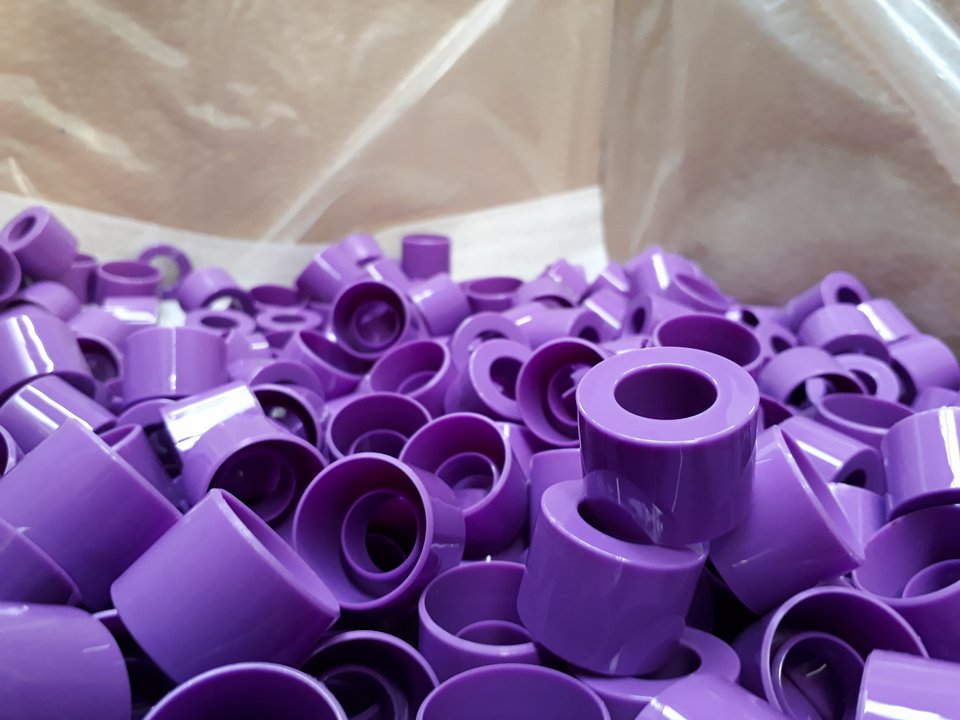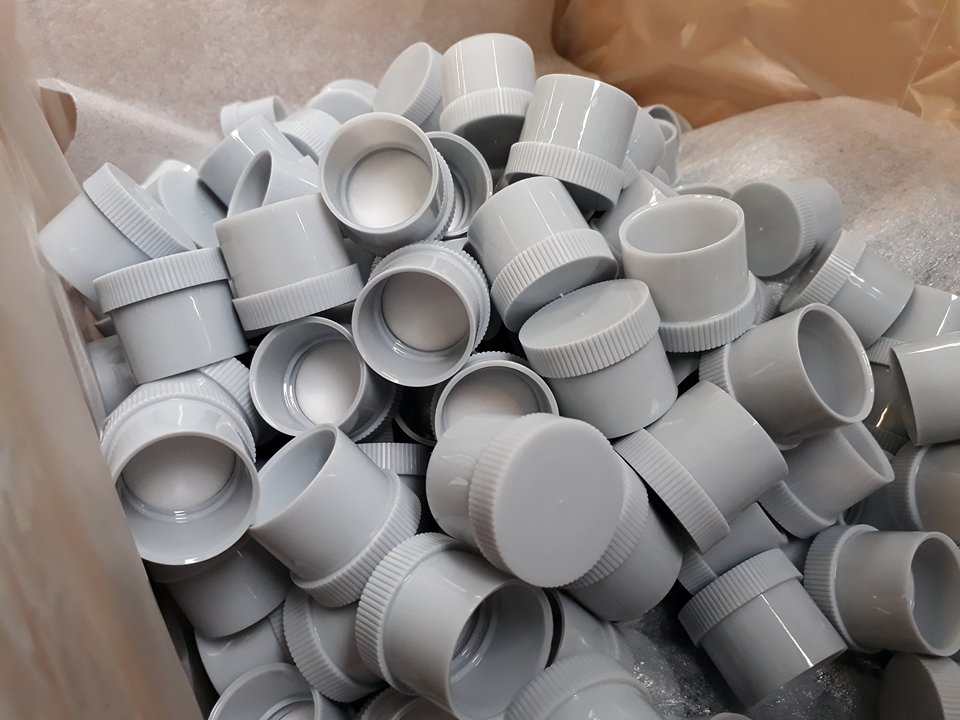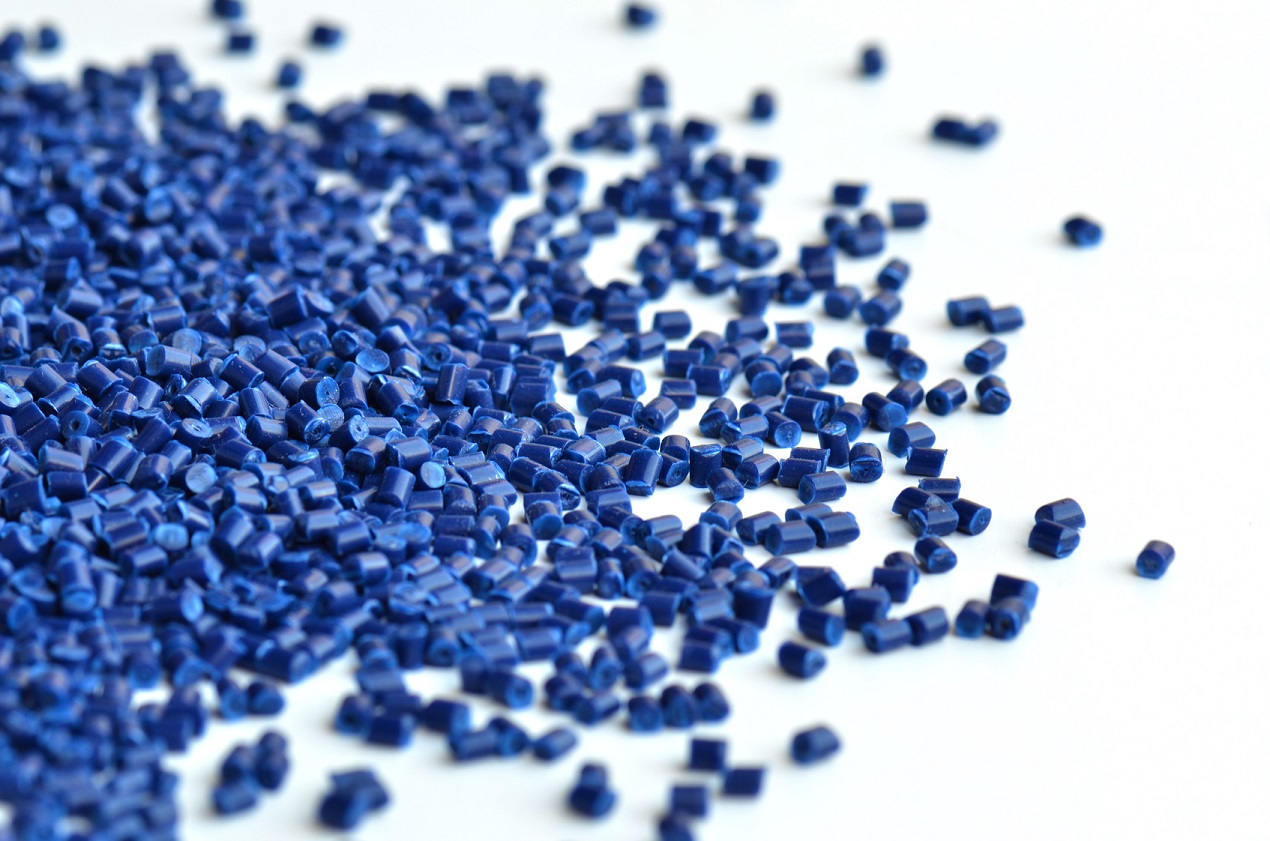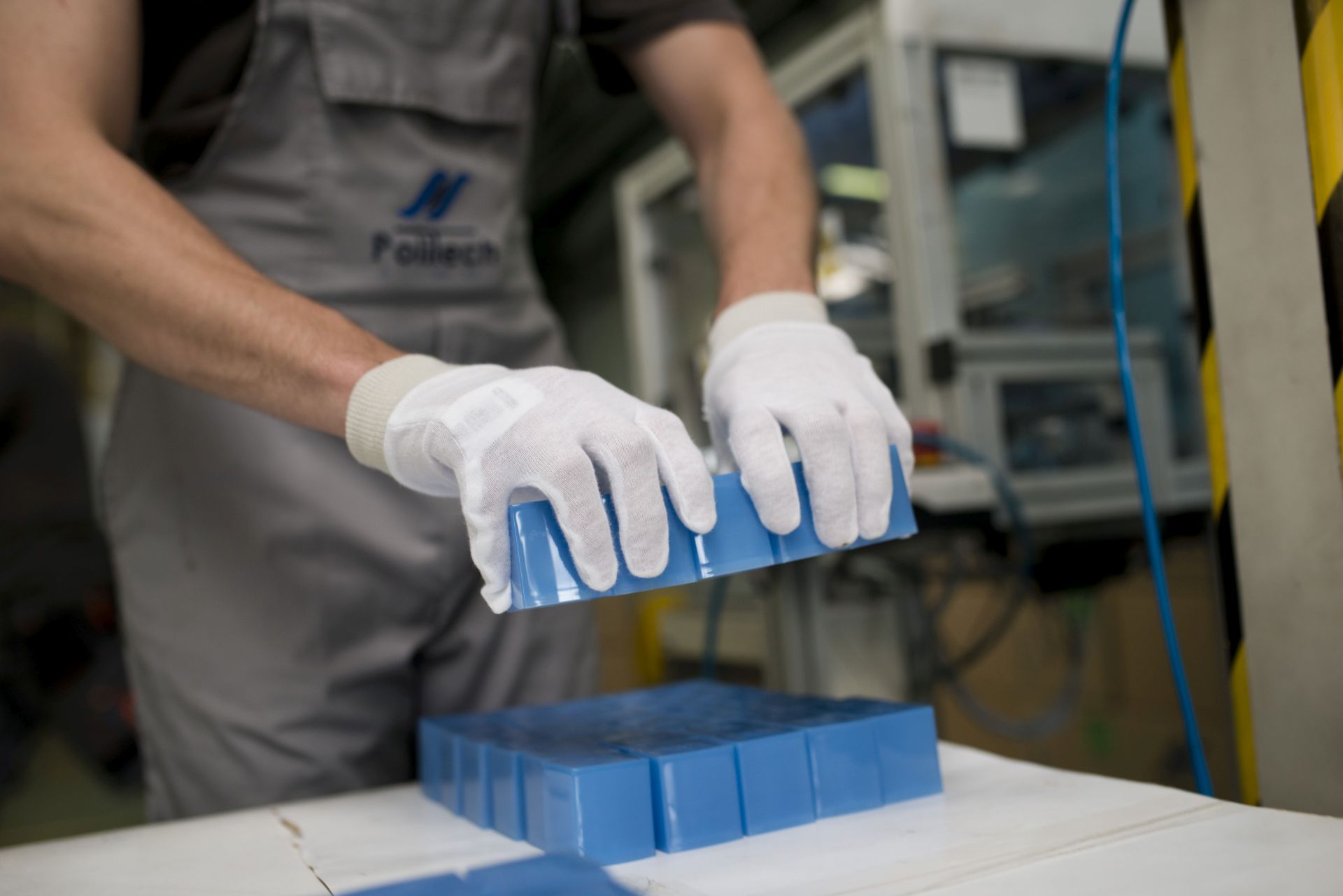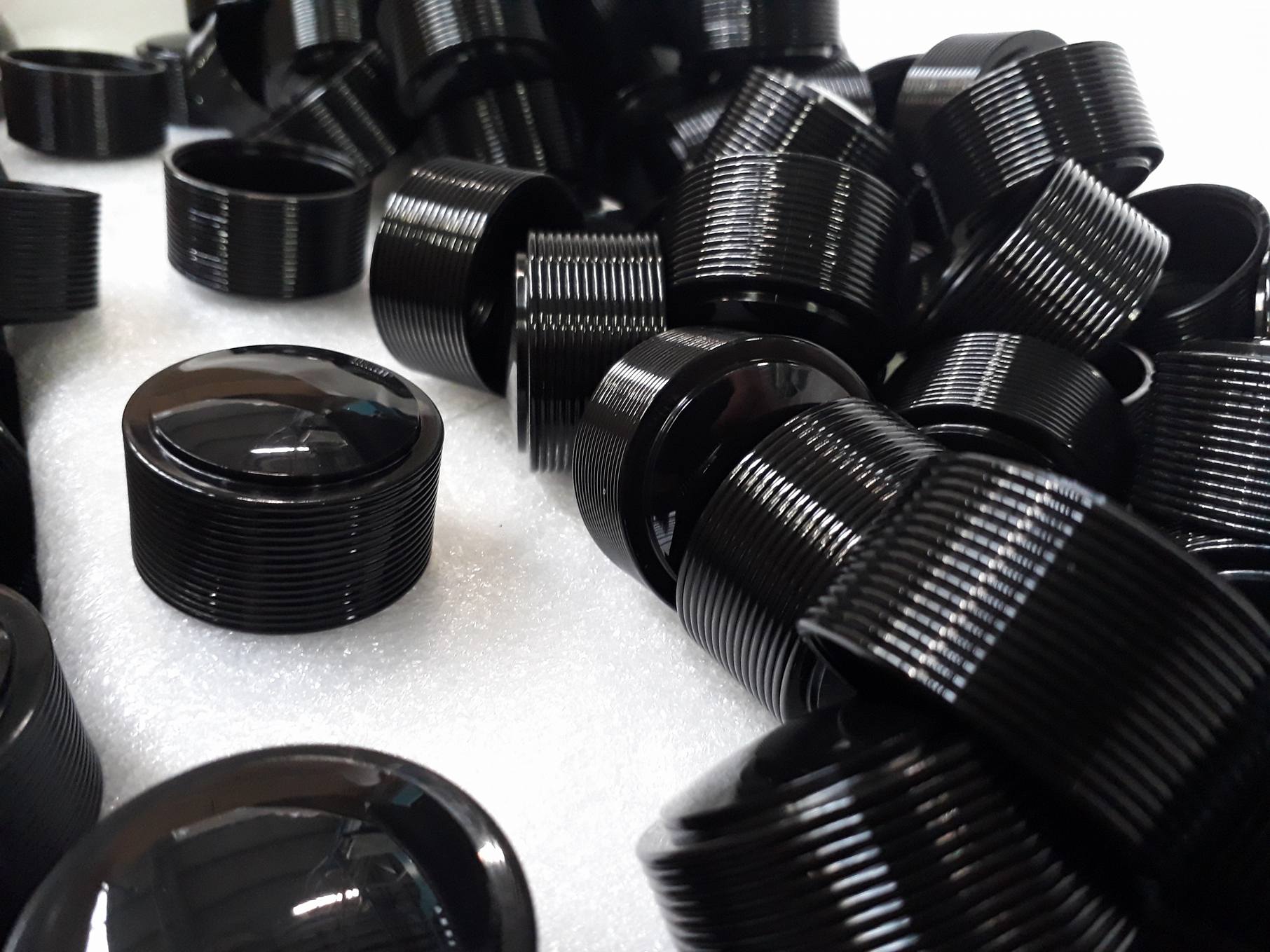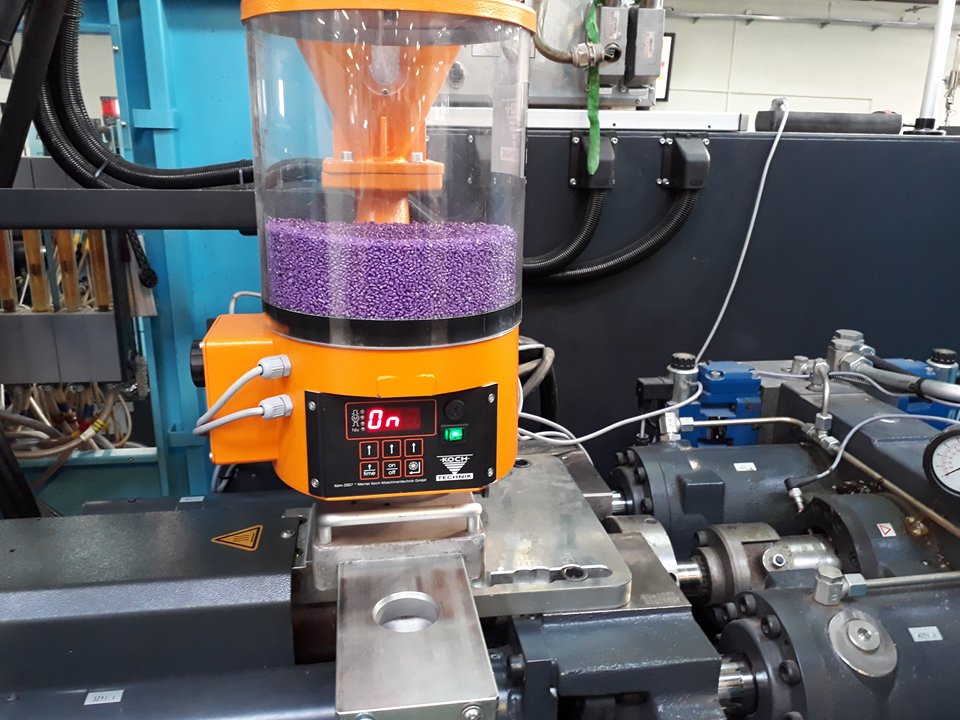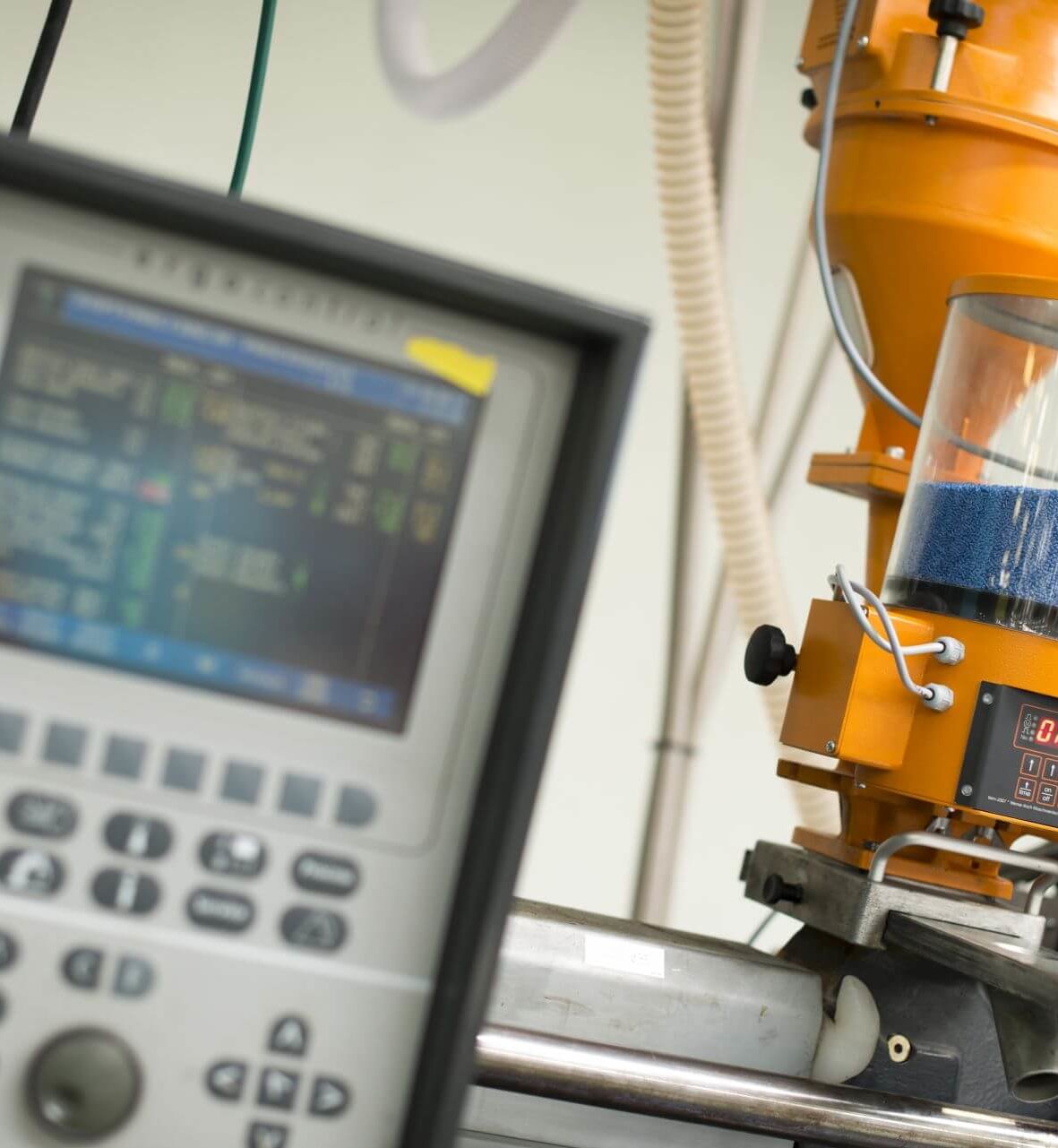
Dyeing is one of the most important stages in the processing of plastic materials. This process of dyeing products may not seem a key issue, but for the client it is very important. During the decision to purchase, the colour of the packaging is the first noticeable aspect that attracts the consumer’s attention.
Why do we dye products?
From the marketing perspective, the colour of the product or the packaging is one of the most important factors to have an impact on the purchasing decisions of customers. Other factors include shape, structure, material used and recognizable producer’s logo. Companies try to outdo each other in using creative solutions that encourage the buyers to purchase their products. As many as 70% of all purchasing decisions stems from the attractive colours of the product packaging. Colour is also one of the most significant elements of the brand experience, one of the many associations a customer has with a particular brand.
Materials dyed by the producer and mass colour coating
There are many ways of dyeing plastic materials, but this article focuses on two methods: using a material dyed by the producer, and using a mass colour coating system as part of the production process. Dyeing by the producer involves initial processing of the material in a way that achieves the expected colour. The ready-to-use granulate is then supplied to product manufacturers, where it can be used without the need to add colourants. Dyeing with the use of dyes is defined as colouring a material during the final processing. Most companies apply this method by adding an appropriate amount of colour masterbatch and mixing it with the material in the cylinder.
Requirements for dyes
Regardless of which dyeing method is chosen, it is important to remember a number of rules concerning dyes: the processing temperature should not have any effect on the colour; the mechanical and electrical properties of the material should not change; and the dyes should have high resistance to sunlight, be easy to mix, non-toxic and not cause any structural changes in the material. However, the final effect that is achieved depends not only on the standards that the dyes meet. Human error, stained feeders, remains of other dyes in the feeder or incorrect mixing of the ingredients may also result in the dyeing process not meeting the initial expectations.
Material dyeing by the producer
Material dyeing by the producer has a number of significant advantages. One of these is increased efficiency of dyeing, which is noticeable with ready-made products. Using pre-dyed and carefully mixed materials decreases the occurrence of smudges, discolorations or separation of the dye from the material. Another advantage is that the dye is always chosen carefully to match the ordered material so there is no risk of one base-dye being used with another material. However, this method has some disadvantages, such as high minimum quantity purchases of the material and the price. The producers of dyed materials frequently limit what they offer to a particular number of available colours. The narrow selection of shades can be a major obstacle for a manufacturer who is often obliged to prepare a very specific colour for their client.
Mass colour coating of materials
On the other hand, it is also possible to purchase the natural, uncoloured material and then add dyes to it at a later stage. The advantages of such a method include decreased costs resulting from the purchase of cheaper materials and dyes, all in quantities that can also be used for future production batches. Additionally, the dyes can be ordered in colours that are easily prepared by the producers.
However, using this method can lead to more errors in the final effect. These may stem from improper cleaning of the pipes and feeders following their use with another dye. There is also a risk of incorrect mixing of the ingredients by the screw, which may cause discolorations, patches of other colours or even loss of the mechanical properties of the material. The disadvantages may also include the necessity to select a dye having an appropriate base for use with a particular material, as well as the one-off high cost of purchasing the feeder.
Dosing the material and the dye
It needs to be emphasized that dyeing with the use of colour masterbatches requires proper dosing to the cylinder moulding machine. Those methods involving injecting a given amount of liquid dye or weighing in the dyeing granulate are becoming less and less popular. Nowadays, dosing is performed by cutting-edge devices, which add the required amount to the cylinder, based on the weight or volume of the dye. The rotary movement of the screw mixes the material with the dye and then a liquid, uniform mass is injected into the mould.
Setting the dose of the dye is essential for achieving the desirable colouring effect. Too little pigment can lead to uneven distribution of the colour and visible patches of the original shade of the material. However, too much can decrease the mechanical properties of the material, leading to its more rapid deterioration in the future. Dye producers attempt to eliminate that problem by stating the exact amount which should be added to a particular quantity of the processed material.
The selection of the plastic material dyeing method lies with the manufacturing company. Each company should carefully consider which solution suits them the best. Producing large quantities of the same element in an identical colour suggests we choose materials dyed by the producer. However, manufacturing many elements with frequent colour changes may make purchasing a feeder and the dyes a more cost-effective processing option.
Powrót do listy artykułów
